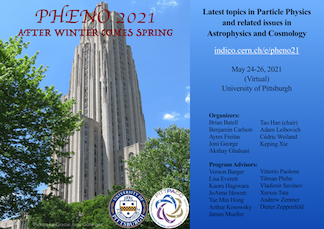Speaker
Description
Non-local quantum field theories have been studied recently as a promising approach to go beyond the Standard Model (e.g. see [1–3]). This approach is strongly motivated by string theory (p-adic string field theory) [4–6]. These theories have the properties of UV-completeness and (proposed as a direction of UV-completion the non-local inifinte-derivative theories) are ghost-free (re-normalizable and predicts conformal invariance at the quantum level) [7]. They are able to rescue dark matter models [3], move trans-planckian processes to sub-planckian [8] and improve inflationary behaviour of the Higgs field [9]. On the same research avenues, we consider an infinite derivative scalar field theory and we show, by a technique devised by Bender, Savage and Milton [10], how to derive the set of Dyson-Schwinger equations in differential form. Then, we provide a method to solve them, assuming that non-local effects are small at low-energies and taking into account only the leading order solutions [11]. Local solutions for the scalar field theory, both for the classical and the quantum case have been recently obtained [12–15] and can be applied also to the solution of the Yang-Mills theory [16] and confinement studies can be accomplished with Kugo-Ojima crtierion properly generalized [17]. It is seen that UV-limit is never reached in this cse. In these studies, we just assume that they represent the local solutions to start from to get the corrections due to the non-locality. An immediate consequence of this approach is that the a mass gap is obtained and the spectrum of the theory becomes computable. In any case, the mass gap is diluted and these theories become conformal in the UV-limit. By analogy, also the graviton propagator possibly would get a mass gap that is diluted in the UV-limit reaching a conformal limit.

